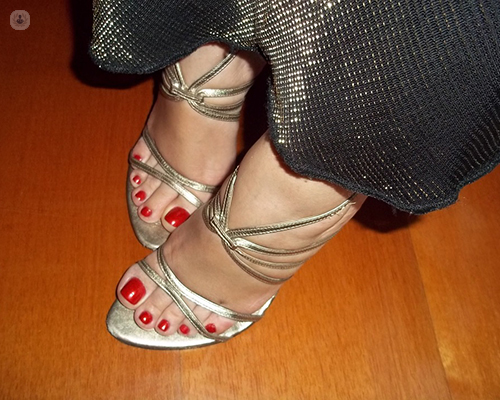


What is hammer toe?
Hammer toe, which is sometimes also referred to as mallet toe, is a type of foot deformity that prevents the toes from staying straight, causing them to bend or curl downwards. Hammer toe most often affects the second, third or fourth toes. If left untreated, hammer toes can require surgery.

Symptoms of hammer toe:
Hammer toe is defined by a bent toe in one or more toe. Moving the affected toes can cause pain or discomfort. It is common for corns or calluses to form on the affected toes and walking can become difficult.
Medical tests to diagnose hammer toe:
A physical examination by a doctor will usually be able to confirm a diagnosis of hammer toe. You may also have an X-ray if bone or tendon damage is suspected.
What are the causes of hammer toe?
A hammer toe bends because the middle joint of the toe becomes curled and bent downwards. This can be attributed to a number of causes, including:
Can hammer toe be prevented?
The following measures reduce the risk of hammer toe forming:
Treatments for hammer toe:
Treatment will depend on the severity of the hammer toe. Milder cases can be treated at home, using a combination of comfortable shoes, shoe cushions or pads and treatments for any bunions or corns. Gently stretching the toes can help to relieve pain and discomfort.
More severe cases of hammer toe where you are unable to move the affected toe at all has to be relieved with surgery. Surgery can restore movement to the toe by either removing disfigured bone or realigning the tendons. Surgery is usually done as a day case, with local anaesthetic, but in very severe cases, this may involve a hospital stay and general anaesthetic.
Which type of specialist treats hammer toe?
Orthopaedic surgeons and podiatrists would treat hammer toes.